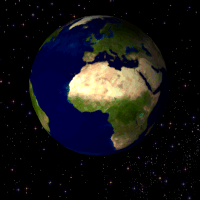Introduced by CompuServe in 1987, the Graphics Interchange Format, better known as GIF, is a unique bitmap image format that has the capacity to support animations. This feature was further improved in its 1989 version, known as 89a. The GIF format permits up to 256 colors per image, with each image or frame possessing its own individual color palette. The Lempel-Ziv-Welch compression technique is employed to compress GIFs, effectively reducing file size without any data loss. While its restricted color palette makes it less suitable for color photographs, the GIF format has found extensive use in diverse fields like research and journalism. Nevertheless, its usage has seen a decrease due to issues related to quality and space, with formats like MP4 gaining more popularity. Despite these challenges, GIF continues to be a vital tool for sharing scenes and communicating messages on the internet[1].
The Graphics Interchange Format (GIF; /ɡɪf/ GHIF or /dʒɪf/ JIF,) is a bitmap image format that was developed by a team at the online services provider CompuServe led by American computer scientist Steve Wilhite and released on June 15, 1987.
 An animated GIF of a rotating globe | |
| Filename extension | .gif |
|---|---|
| Internet media type | image/gif |
| Type code | GIFf |
| Uniform Type Identifier (UTI) | com.compuserve.gif |
| Magic number | GIF87a/GIF89a |
| Developed by | CompuServe |
| Initial release | 15 June 1987 |
| Latest release | 89a 1989 |
| Type of format | lossless bitmap image format |
| Website | www |
The format can contain up to 8 bits per pixel, allowing a single image to reference its own palette of up to 256 different colors chosen from the 24-bit RGB color space. It can also represent multiple images in a file, which can be used for animations, and allows a separate palette of up to 256 colors for each frame. These palette limitations make GIF less suitable for reproducing color photographs and other images with color gradients but well-suited for simpler images such as graphics or logos with solid areas of color.
GIF images are compressed using the Lempel–Ziv–Welch (LZW) lossless data compression technique to reduce the file size without degrading the visual quality.
While once in widespread usage on the World Wide Web because of its wide implementation and portability between applications and operating systems, usage of the format has declined for space and quality reasons, often being replaced with video formats such as the MP4 file format. These replacements, in turn, are often termed "GIFs" despite having no relation to the original file format.
